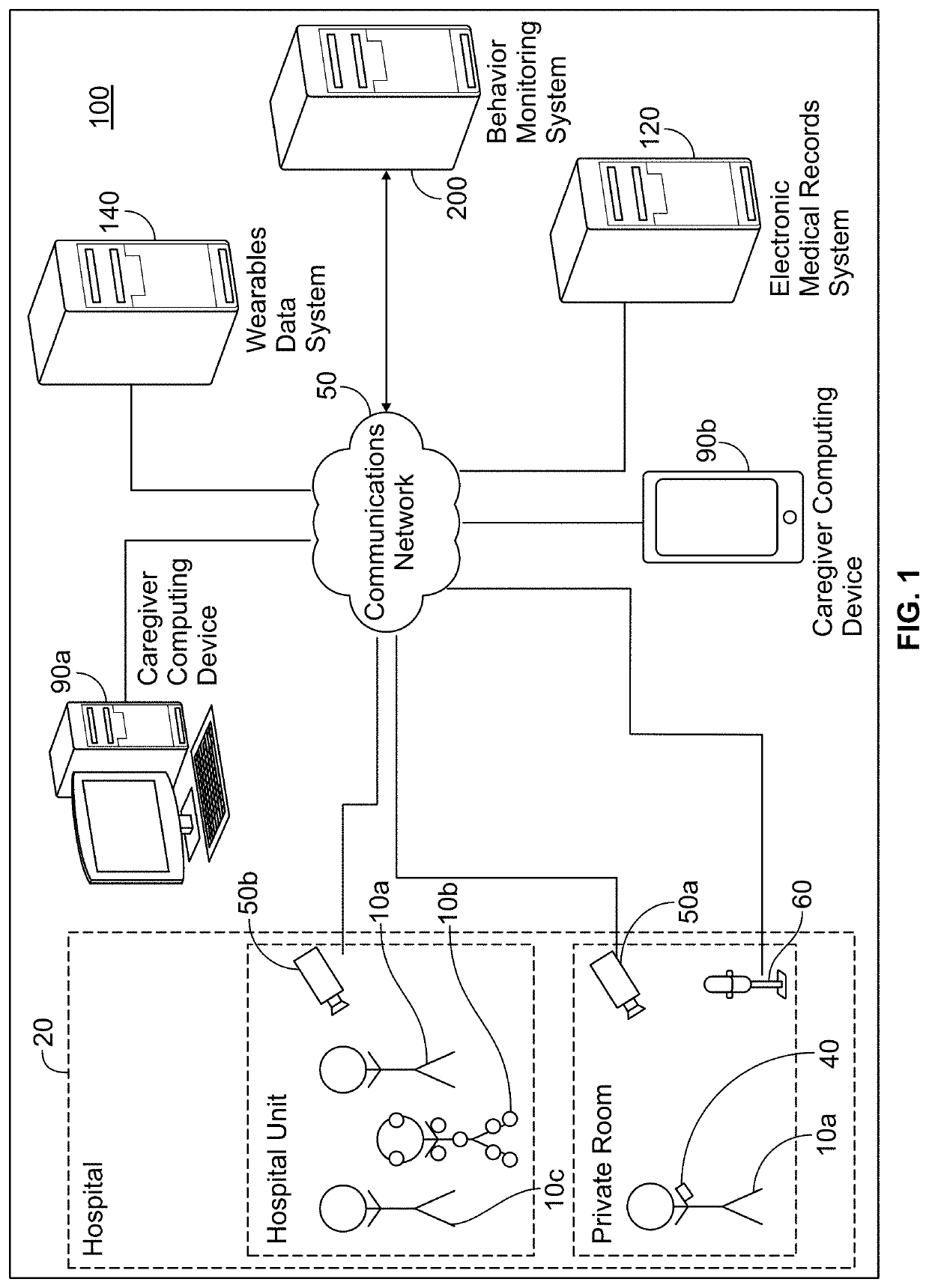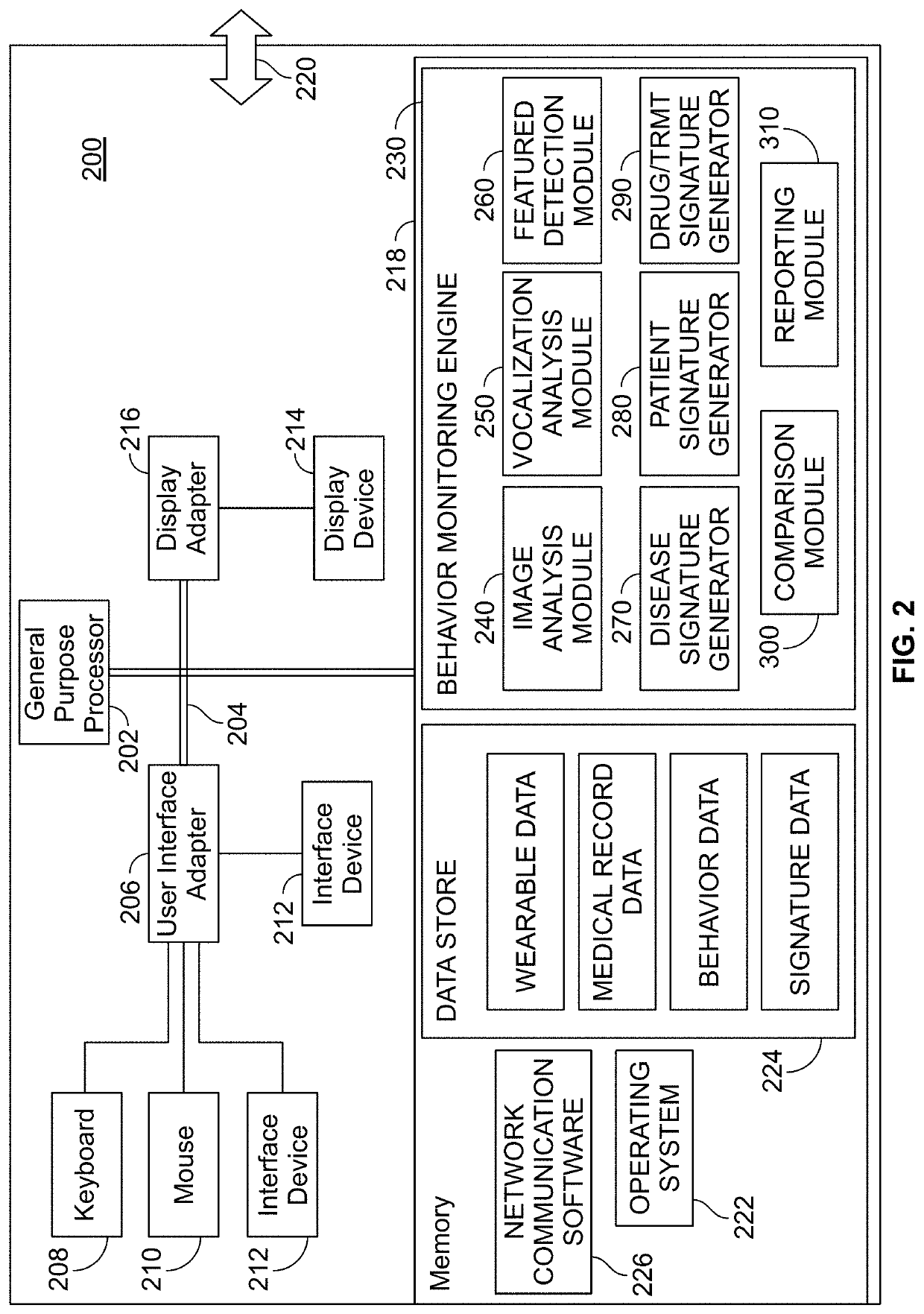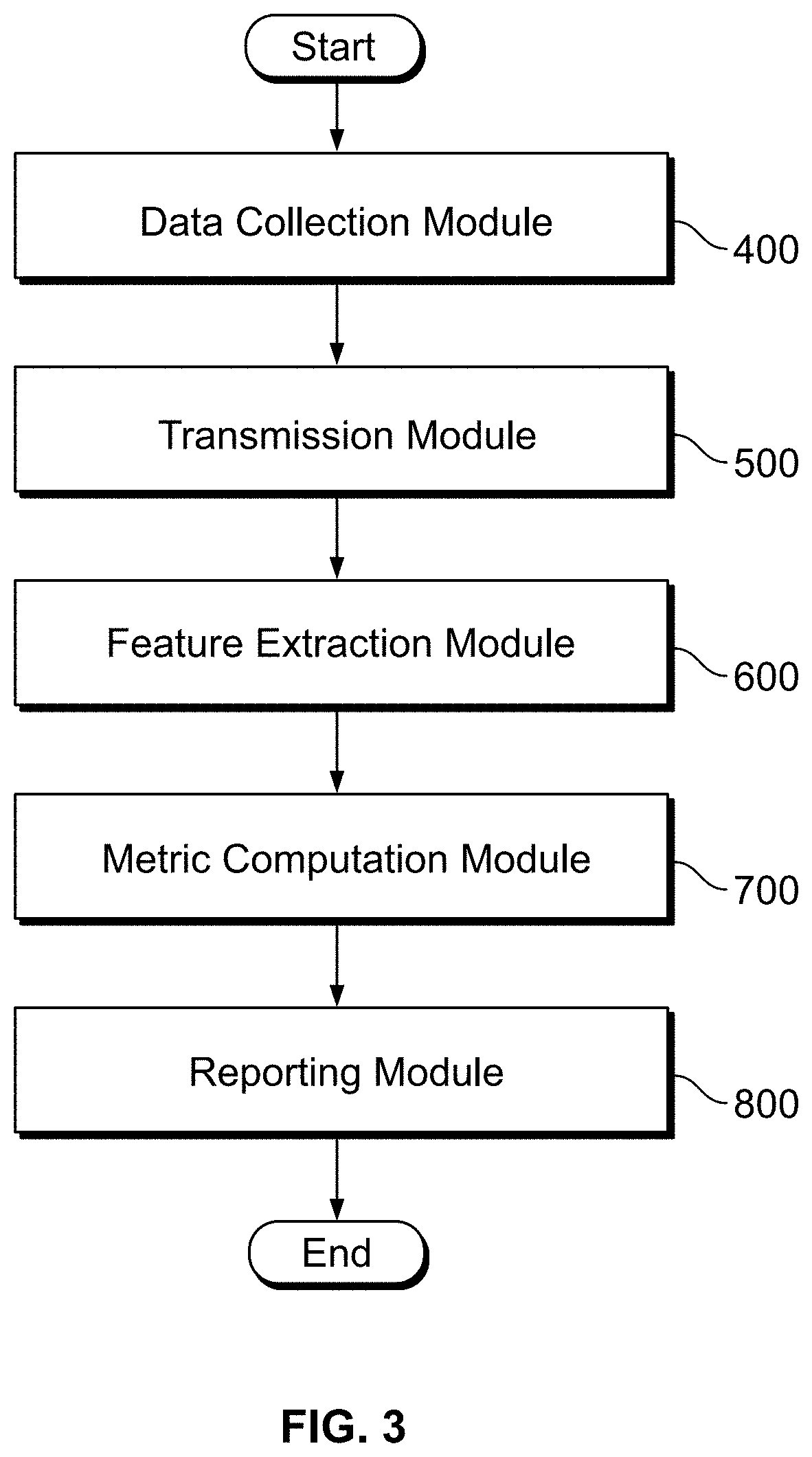Method and system for assessment of clinical and behavioral function using passive behavior monitoring
a clinical and behavioral function technology, applied in the field of passive behavior monitoring methods and systems, can solve the problems of ensuring inter-rater reliability/consistency across evaluations, elusive development of reliable systems that remove subjectivity and are scalable and cost-effective, and difficult to ensure reliability/consistency between the two-rater evaluations
- Summary
- Abstract
- Description
- Claims
- Application Information
AI Technical Summary
Benefits of technology
Problems solved by technology
Method used
Image
Examples
Embodiment Construction
[0026]According to illustrative embodiment(s) of the present invention, various views are illustrated in FIGS. 1-4 and like reference numerals are used consistently throughout to refer to like and corresponding parts of the invention for all of the various views and figures of the drawings.
[0027]The following detailed description of the invention contains many specifics for the purpose of illustration. Any one of ordinary skill in the art will appreciate that many variations and alterations to the following details are within scope of the invention. Accordingly, the following implementations of the invention are set forth without any loss of generality to, and without imposing limitations upon, the claimed invention.
[0028]The present invention provides a system and method configured to capture and analyze / measure a person's behavioral function(s) across multiple physical / spatial dimensions (2-D or 3-D) and / or other dimensions (e.g., 4-D, i.e., 3-D over time), and to develop one or m...
PUM
 Login to View More
Login to View More Abstract
Description
Claims
Application Information
 Login to View More
Login to View More - R&D
- Intellectual Property
- Life Sciences
- Materials
- Tech Scout
- Unparalleled Data Quality
- Higher Quality Content
- 60% Fewer Hallucinations
Browse by: Latest US Patents, China's latest patents, Technical Efficacy Thesaurus, Application Domain, Technology Topic, Popular Technical Reports.
© 2025 PatSnap. All rights reserved.Legal|Privacy policy|Modern Slavery Act Transparency Statement|Sitemap|About US| Contact US: help@patsnap.com



